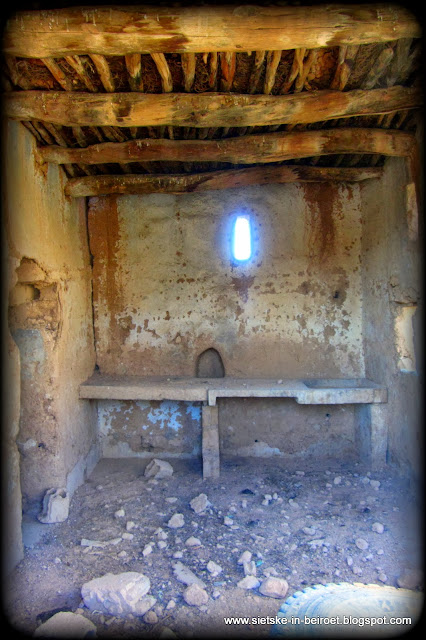Some amateur-archeology today. You are warned.
Last week I was in the south-western part of the Beqaa
Valley; this week work brought me to the complete other side, the north-eastern part of the valley.
And
although in the same valley, which is not that big (120 km long and on average some 16 km
wide), it is a totally different region: much more rugged, dry and
desolate. The south is somewhat green and lush, whereas the northern part is
desert.
And one region in specific always surprises me; El Qaa.
It is a Christian village quite close to the border of Syria, and it is the
only place in Lebanon where you find the remains of a large number of original
mud houses. I have written about it before so you can stop reading now.
Mud houses were invented in the Middle East (In Iraq, to
be exact). When people started settling down, and looked for more permanent
shelter, the building material of choice was mud, probably the only building
material available. It was cheap, readily available and very malleable.
In
swampy spots we find reeds, which have always been used with mud in
construction. Another material is chaff, the residue from primitive threshing
methods using sleighs. Mixed with clay or mud it acts as a bonding agent which
prevents the formation of cracks. (source)
And so well before we ever got to building in stone, and cement,
people in Lebanon, especially in country side, built with mud. Not many of
these dwellings have survived the time, but for some reason, in El Qaa, there’s
loads of them. They are all in ruins, and all that is left are a few walls, but
for some reason, people never thought of destroying them completely and using
the land.
 |
| The back is partially covered with stone, and the original roof has been replaced with cement. |
So while driving through el Qaa, which is above Hermel,
you suddenly see these beige heaps on both side of the road. I don’t know why
it is just in this village that they have all remained, maybe it is related to
the large amount of stone tools that are found here, called Shepherd Neolithic.
Originally, the mud would be covered by a layer of fine
chalk, painted white, so you wouldn’t really notice they’re made of mud until
they start crumbling down. If you want to know what a proper mud house looks
like, there is one Turbol, where someone has built an original mud house and
turned it into a museum.









2 comments:
Dear Ms Galama, I hope this finds you well and I apologise in advance for this unsolicited enquiry.
My name is Chris Nelson and I am Associate Business Editor at The National newspaper here in Abu Dhabi. I am trying to grow my stable of freelance writers based in the wider region and I came across your site recently.
I wonder if you would be amenable to writing occasional commissioned bylined articles for us on business issues. We pay 1.50 dirham per word (about 40 US cents) and articles are usually between 700 and 1,000 words long.
If you are interested, I'd be delighted to hear from you. My email address is:
chnelson@thenational.ae
Thanks very much for your time and I look forward to hearing from you.
Yours sincerely,
Chris Nelson
this was on NPR for Lebanon
http://www.npr.org/2013/10/25/240751201/forget-the-lottery-you-have-better-odds-of-winning-this-picasso
Post a Comment